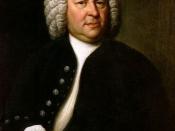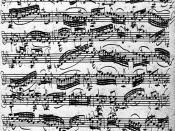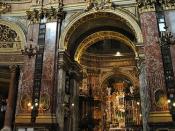The Baroque era which dates from around the years 1600 to 1750 describes the period of European history which showed a great change in several things at that time especially art and architecture (painting and sculpture), music, literature, and dance. After much debate, historians are attributing most of these changes to the scientific activities taking place at that time. However, it is also said that not all the characteristics of scientific writers from the seventeenth century can be considered baroque. In addition, the scientists from earlier times cannot be labeled either as "renaissance", "baroque", or "classical" scientists since labeling them like that is extreme. They all did belong to the seventeenth century but in that case, baroque scientists would include names like Kircher who do fit the description of a baroque scientist. On the other hand, others from the same period such as Kepler might be considered more of a renaissance scientist, and Galileo as a classicist.
The baroque scientists were thought to be more nature-oriented and they observed the natural world and therefore, the "object of their study was full of meaning" (Eriksson).
However, it can be argued that baroque science brought about the phase of culture that existed in that era. The artistic style was taken up many theoreticians, many from the Jesuit order, who implemented it in real art. The foundation to this art reflected the reaction to mannerism. Baroque art merged painting and architecture together and appealed emotionally through colours, tension and movement that were used to overwhelm the senses of the viewer. The painter of this time aimed at the soul which was through naturalism and intensity (Hoyrup).
The style of the paintings can be described as below. It had strong perspective effects and dramatic use of color. Light and dark shades called chiaroscuro and...


